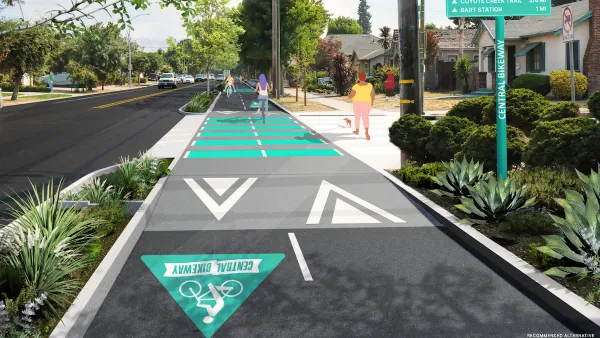After a failed attempt at similarly broad land use regulations failed in 2011, the Minnesota Department of Natural Resources is again undertaking an outreach process to create land use regulations along 72 miles of the Mississippi River.
The Minnesota Department of Natural Resources is halfway through a two-year process to "revamp land-use rules along the stretch of the Mississippi River that runs through the Twin Cities area," according to Jim Anderson. The process "is once again pitting cities and development interests against environmental concerns."
"[The] rules that would affect 21 cities, five counties and four townships along a 72-mile stretch of river from Dayton to Hastings."
In St. Paul, for instance, "[almost] 2,000 buildings and nearly 3,000 parcels of land in the city would come under new construction limits near bluffs and steep slopes along the river."
The cities want local control over land use regulations, as do developers, while environmentalists would like to limit the amount of exceptions on the table. Another regulation under consideration that has provoked the ire of environmentalist river proponents: "The rules weaken scenic protections by allowing taller buildings along the river, including some of its most beautiful stretches: the gorge near the University of Minnesota, West Side Flats, Pine Bend Bluffs in Inver Grove Heights and the bluff lands of eastern Dakota and southern Washington counties."
FULL STORY: DNR land-use rules draw concerns along the Mississippi riverfront

Planetizen Federal Action Tracker
A weekly monitor of how Trump’s orders and actions are impacting planners and planning in America.

Silicon Valley ‘Bike Superhighway’ Awarded $14M State Grant
A Caltrans grant brings the 10-mile Central Bikeway project connecting Santa Clara and East San Jose closer to fruition.

Amtrak Cutting Jobs, Funding to High-Speed Rail
The agency plans to cut 10 percent of its workforce and has confirmed it will not fund new high-speed rail projects.

Cash-Strapped RIPTA Unveils Massive Cuts to Bus Service Across the State
Just 9 bus routes untouched as agency proposes to slash trips but CEO remains mum on potential layoffs.

How a Truck Tax Could Save the Highway Trust Fund
The freight trucking industry is a prime candidate for a mileage tax that would boost road maintenance revenue.

Metro Data: LA Transit Ridership Fell Due to Immigration Raids
Metro ridership data reveal how the ICE raids sweeping Los Angeles are disrupting daily life and impacting how people move around the city.
Urban Design for Planners 1: Software Tools
This six-course series explores essential urban design concepts using open source software and equips planners with the tools they need to participate fully in the urban design process.
Planning for Universal Design
Learn the tools for implementing Universal Design in planning regulations.
Yukon Government
Caltrans
New Jersey Institute of Technology
Mpact (founded as Rail~Volution)
City of Camden Redevelopment Agency
City of Norman, Oklahoma
City of Portland
City of Laramie





























